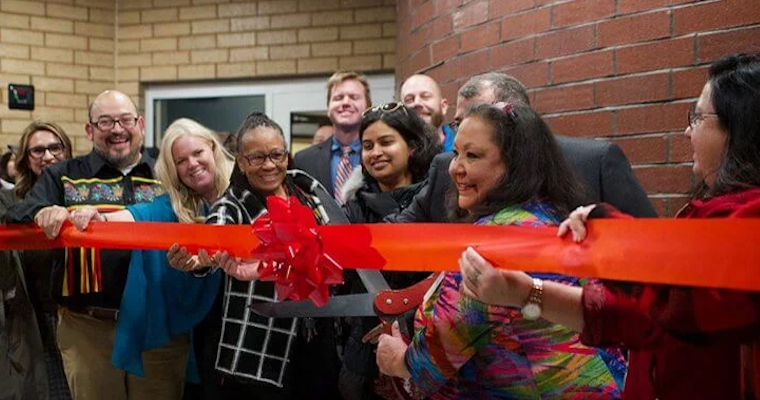Launching and running a business is tough under any circumstances. Yet Native American entrepreneurs have long confronted additional barriers to startup success, including a lack of financing, geographic isolation and deeply ingrained discrimination. That said, Native American entrepreneurship is on the rise, particularly among those in midlife.
Firms owned by Native Americans and Alaska Natives grew by 15% from 2007 to 2012, according to the Small Business Administration (the most recent figures available). According to the U.S. Census Bureau, there were an estimated 29,089 American Indian and Alaska Native-owned businesses in the U.S. in 2016.
A Diverse Range of Businesses
While the best-known tribal business in the modern era is gaming, indigenous entrepreneurs are increasingly creating a diverse range of companies, such as telecommunication firms, digital enterprises, federal contractors and producers of fashion and art.
“We’re capable of doing business ourselves,” says Sarah Agaton Howes, an Anishinaabe artist, teacher, designer and community organizer from Fond du Lac Nation in Minnesota. “We have always evolved to survive. We are at a point to do more than survive. We need to thrive now.”
Take the experience of Madonna Yawakie, president and co-founder with her husband Mel Yawakie of Turtle Island Communications, which provides broadband, engineering and consulting services to tribal nations. Now 60 (Madonna) and 59 (Mel), they started the business in 2001.
A Citizen of the Turtle Mountain Band of Chippewa Indians, Madonna grew up on the Turtle Mountain reservation in North Dakota. After graduating from North Dakota State University, she entered the telecommunications industry with U.S. West (now CenturyLink) and worked there largely in marketing services to tribal lands, a corporate position she created. “I choose to learn as much as I could at the company,” she says.
The telecommunications industry underserves rural tribal nations. So, Madonna Yawakie and Mel, an engineer, decided to fill the need by working with tribes to bring state-of-the-art broadband and wireless services. Digital sovereignty will only strengthen the foundation of tribal economies, they believe. “We had to do our part,” Madonna says.
She didn’t think of herself as an entrepreneur but found she could draw on her previous experience to start a business.
Business Numbers Are Likely Under-counted
Author David Treuer, an Ojibwe from the Leech Lake Reservation in northern Minnesota, echoes Madonna’s perspective in his book, The Heartbeat of Wounded Knee: Native America from 1890 to the Present.
Treuer notes that when he visited the Tulalip Reservation in Washington State, 62 registered businesses were officially listed. That number didn’t count the fishermen and their fleet of some 20 boats, though. Or the 139 tribally owned-and-operated firework stands. Or the nearby tribal businesses that technically weren’t on the reservation. Treuer estimates at least “a few hundred Indians are in on the hustle” at Tulalip.
“The received notion — reinforced at every turn in editorials and investigative pieces and popular culture — is that reservations are where Indians go to suffer and die,” Treuer writes. “But reservations are not stagnant places. Despite their staggering rates of unemployment, they are home not only to traditional ways of living but to new tribal businesses as well.”
‘The Confluence of the Traditional and the Contemporary’
Heart Berry is the vibrant Ojibwe design, art and lifestyle online store founded by Sarah Agaton Howes, an artist and designer in her mid-40s. Howes is well-known for her moccasins featuring Ojibwe floral designs and she teaches classes in moccasin making and similar skills in the community and through videos.
Howes recently published Nookomis Obagijigan — or Grandmother’s Gift — a bilingual book in Ojibwe and English that teaches moccasin making.
She also designs blankets as an Inspired Natives Collaborator with Eighth Generation, a Native-owned and operated company based in Seattle. “For us, as an Anishinaabe people, giving a blanket is the pinnacle gift,” she says.
Steeped in the traditions of the Anishinaabe, Howes taps into modern information technologies to spread her message and generate sales. Reflecting on Native American businesses, she says “we live at the confluence of the traditional and the contemporary.”
Her energy is electric and her laugh infectious. Howes’ conversation honors the people who taught and mentored her over the years, and she enjoys spending time with younger Native Americans talking about their possibilities and opportunities.
Howes also has big plans for herself and her enterprise.
“What I think I am going to do is spend a lot of time always learning, reinvesting in my business, learning new skills all the time, putting that check in the bank and not in the mall and continuing to build my skill set,” she says. “We have to start to allow ourselves to dream bigger. Let ourselves take that risk.”
The ‘Good New Home’
Another example of turning a Native American entrepreneurial dream into reality: The new Mino Oski Ain Dah Yung complex in St. Paul, Minn., serving American Indian youth ages 18 to 24 who are homeless or have experienced homelessness. Mino Oski Ain Dah Yung, which means “Good New Home” in Ojibwe, was designed by Michael Laverdure, principal at DSGW Architects and President of the Native American-owned planning firm, the First American Design Studio.
Laverdure is an enrolled member of the Turtle Mountain Band of Chippewa in North Dakota. His work is mostly with tribal nations.
The complex’s grand opening November 20 was jammed with people taking tours of the building and services, ranging from a medicine garden and cultural activity center for regalia and drum making to its workforce center and teaching kitchens.
Standing outside the building on a chilly fall evening, Laverdure pointed out that Minnesota’s two major tribes are honored with the seven totems on the complex’s outside wall reflecting the Seven Teachings of the Anishinaabe people and the three tipis highlighting the Lakota or Sioux.
He is eloquent about how he uses an Indigenous mindset when approaching and designing a project. Laverdure is also on a passionate mission to expand the ranks of native American architects, professionals and entrepreneurs.
“I’ll feel I’ll have left a legacy if I can have one kid come up to me and say: ‘I became an architect because of you, and I’ve done twenty projects,’” he reflects. “I really believe we need to get out there and get more kids to become the next generation of entrepreneurs and business people.”
Laverdure, Howes and the Yawakies are making a significant difference to tribal nations and to the wider community. Theirs is a rich intergenerational story that goes far back, and far ahead. It seems a safe bet that the ranks of indigenous entrepreneurs will continue to expand.
Additional Search Terms: Minority entrepreneurship, minority business ownership, small businesses
Learn More
Encouraging and Supporting Minority Entrepreneurship for Long-Term Success




